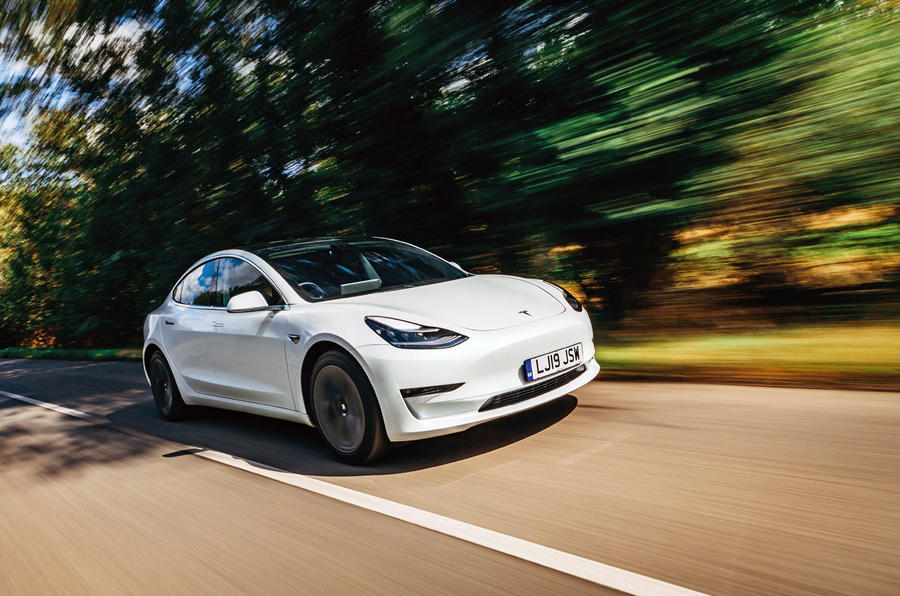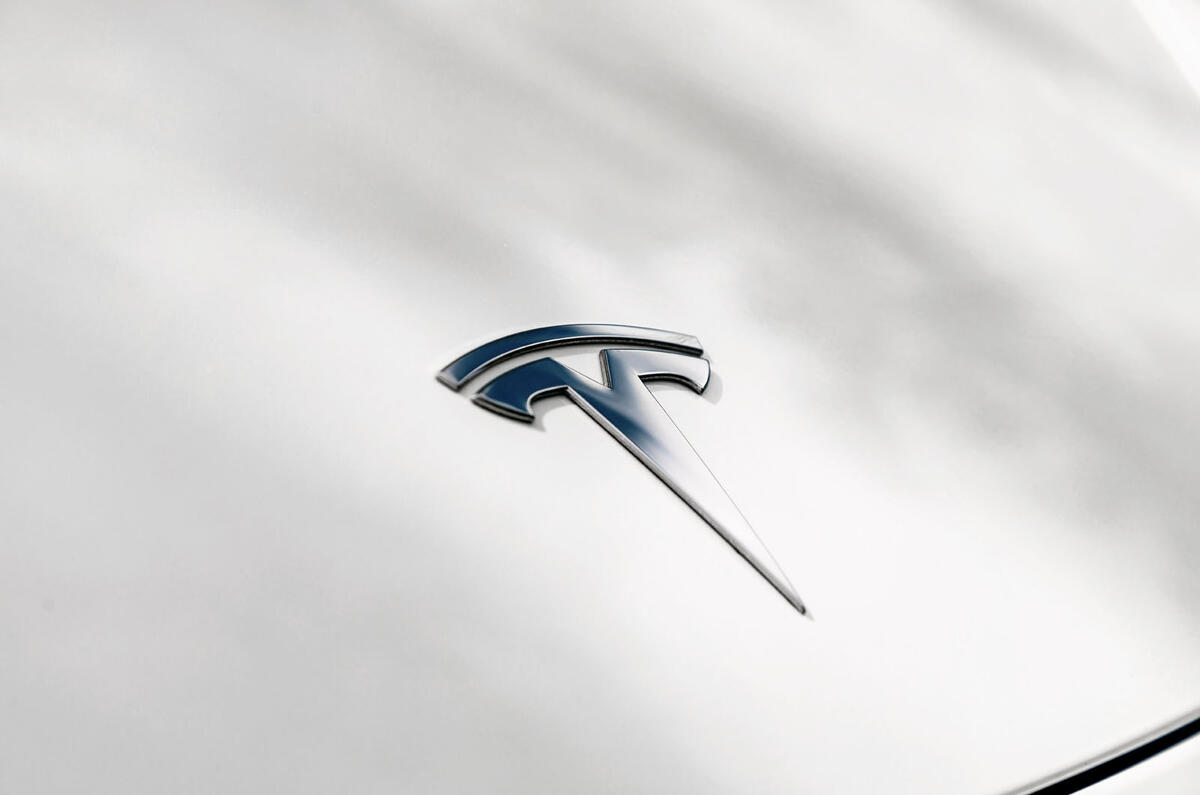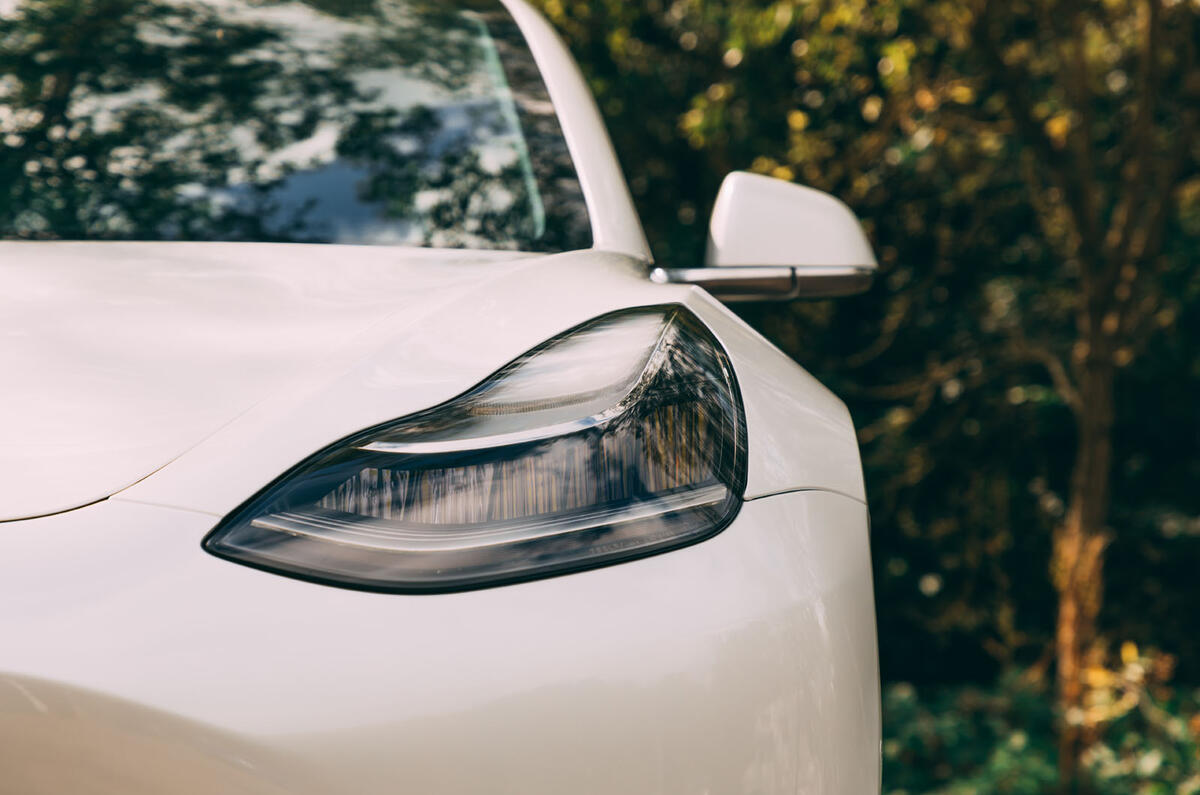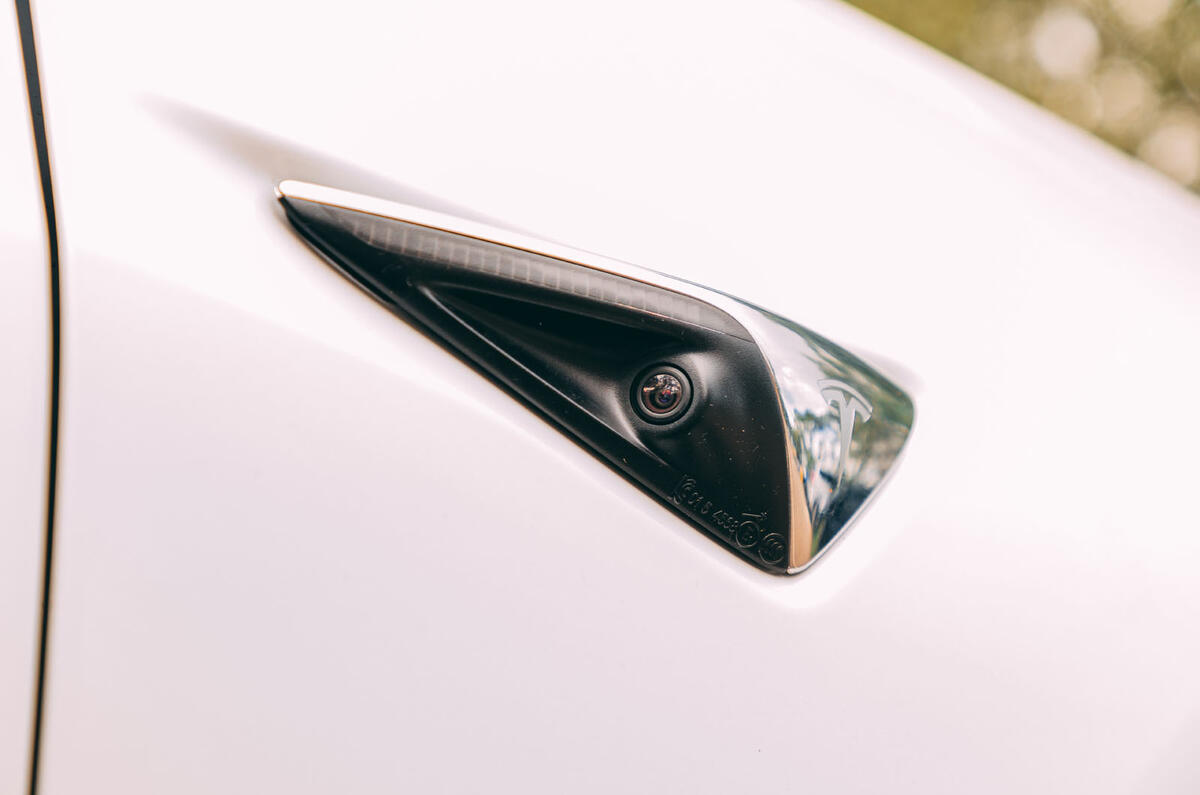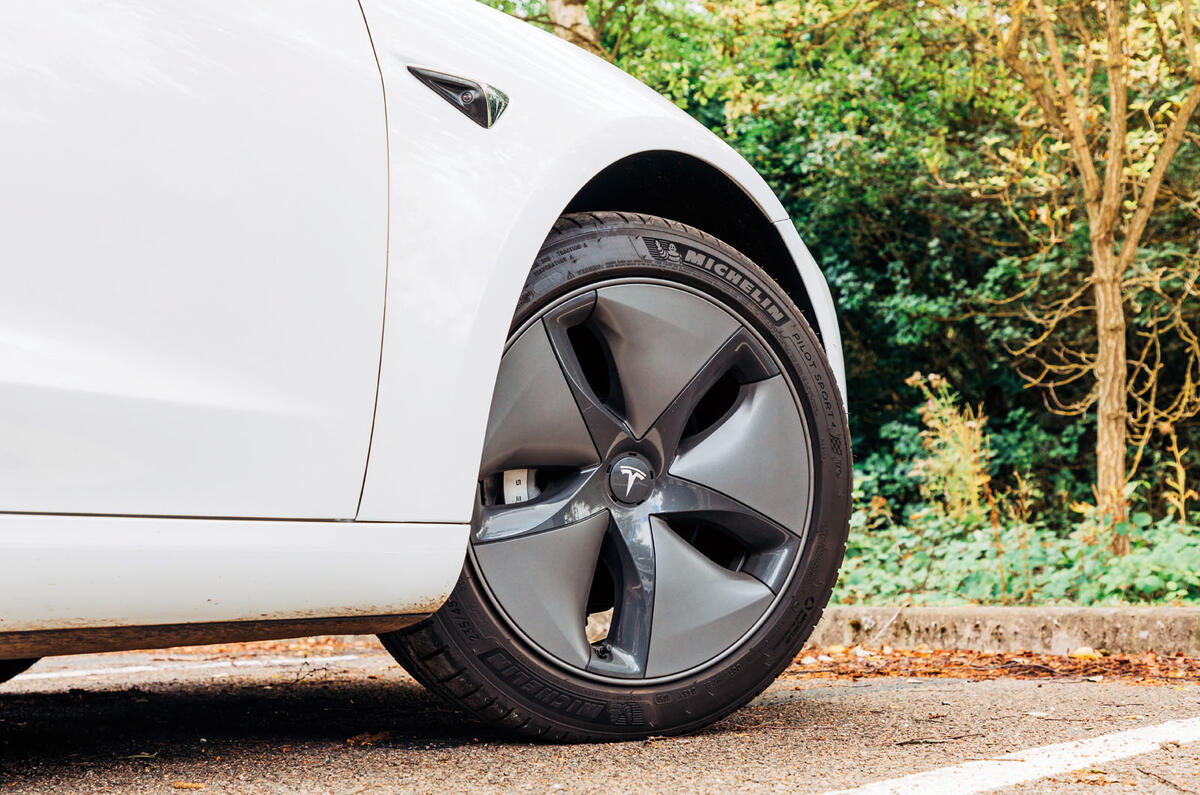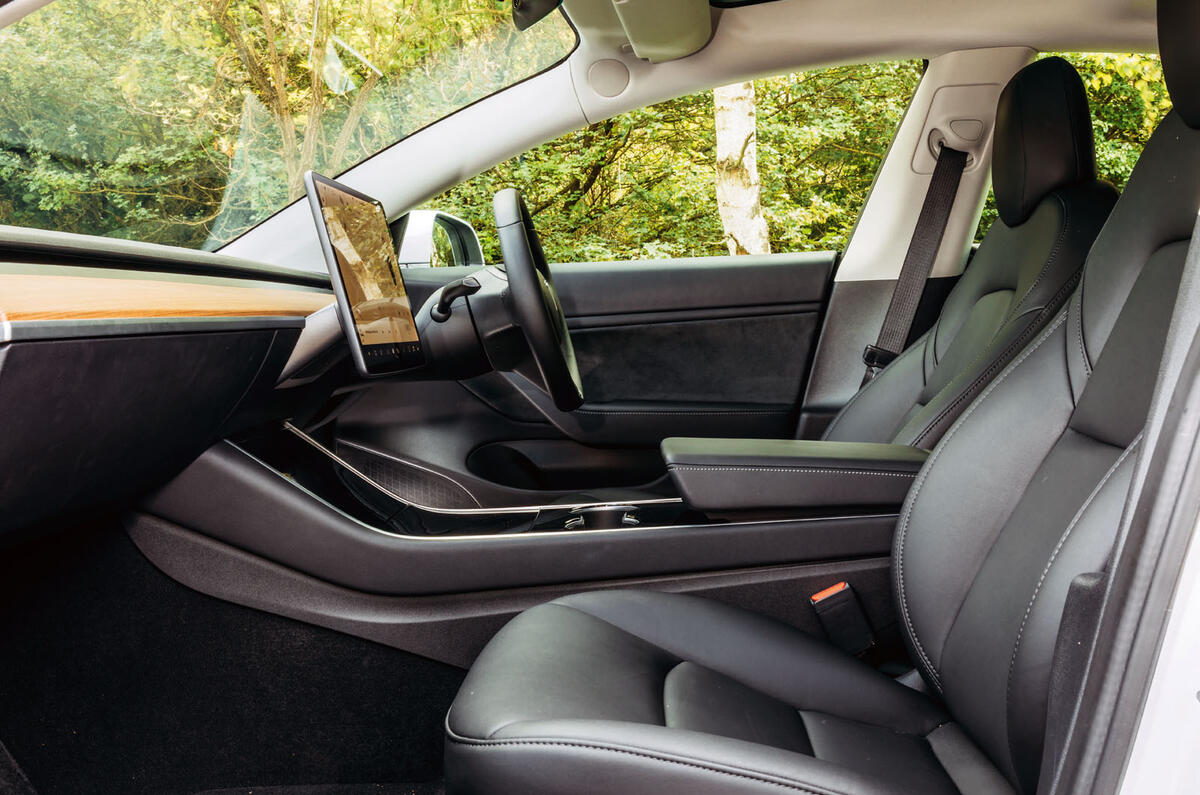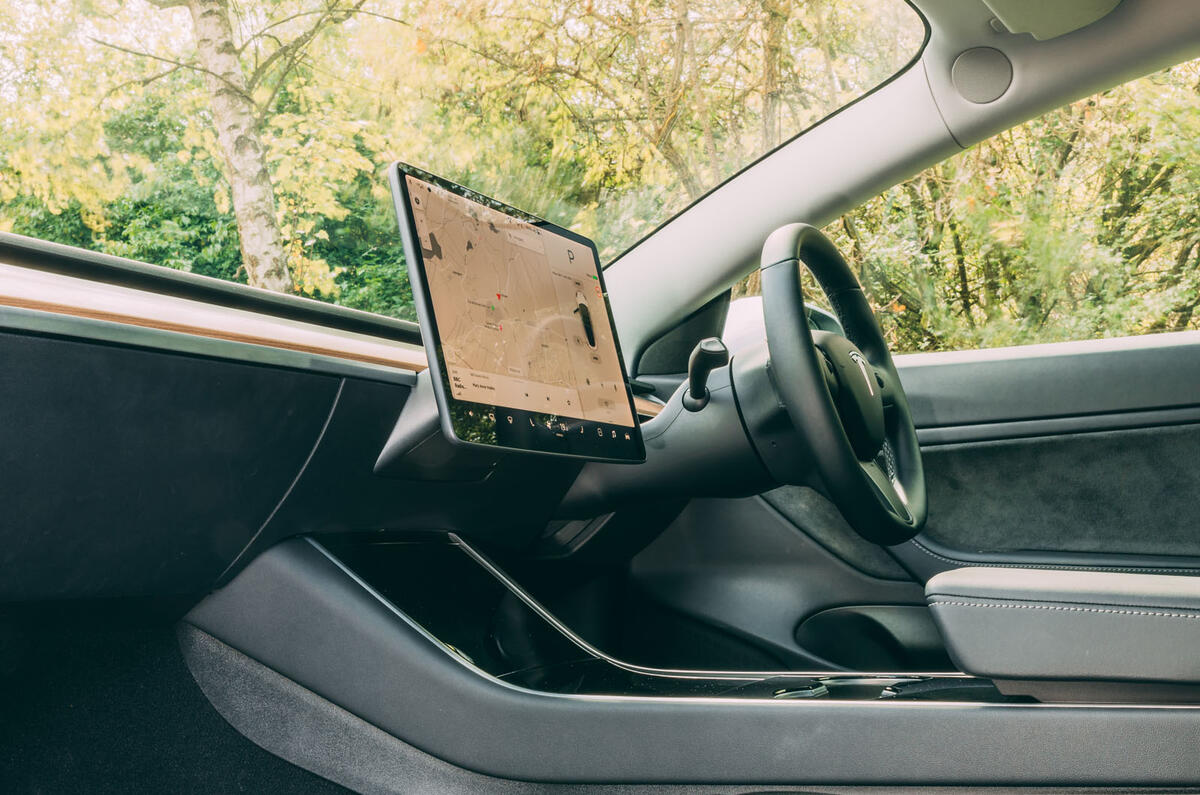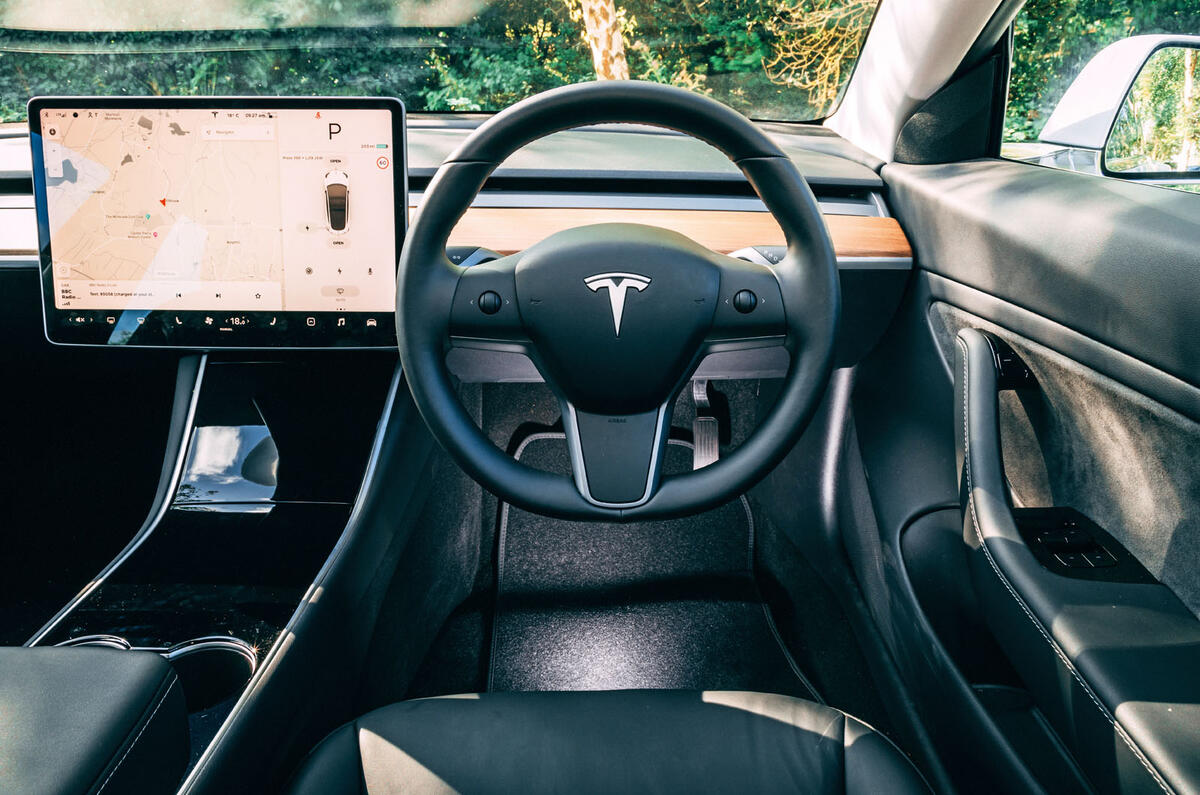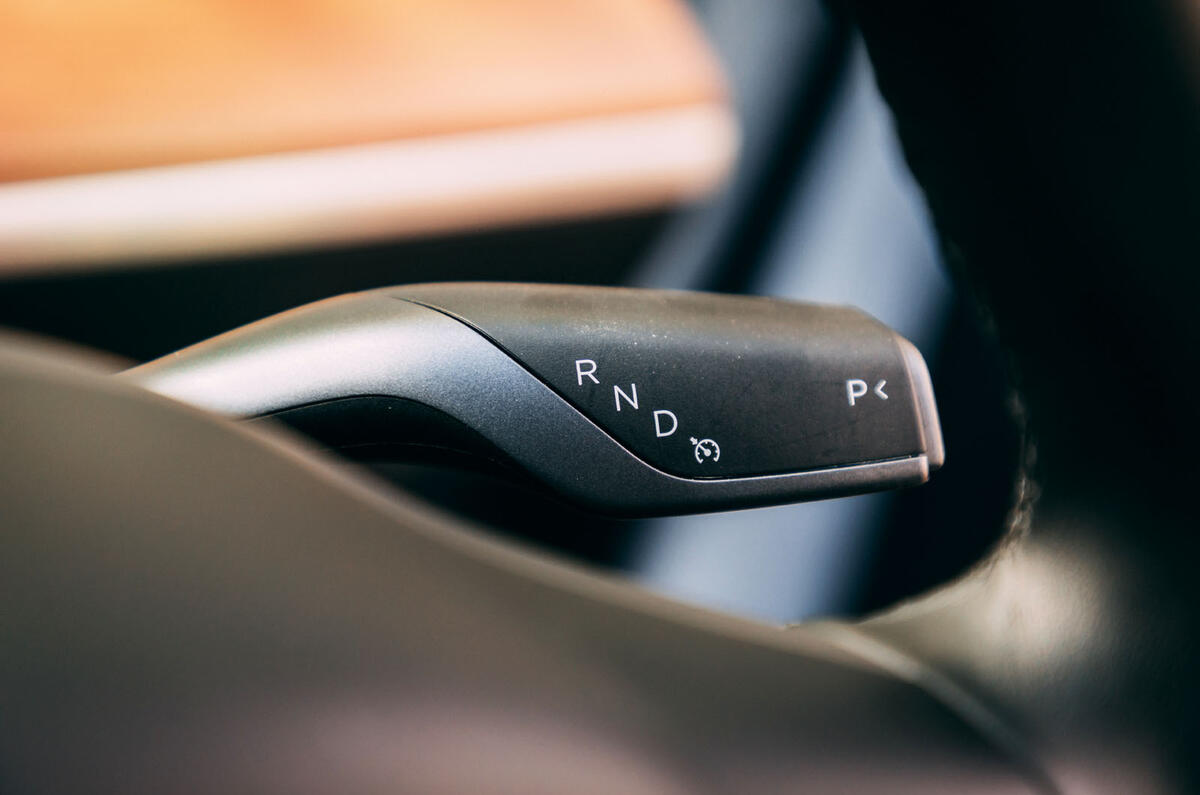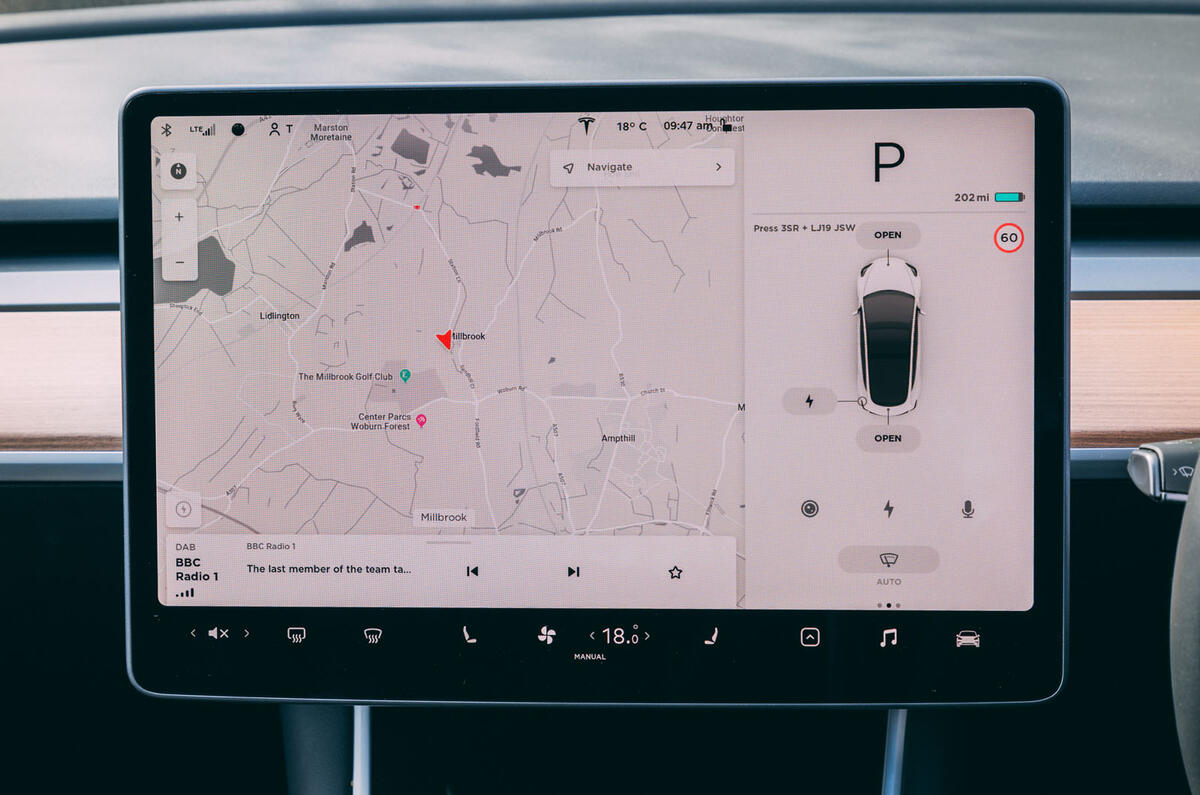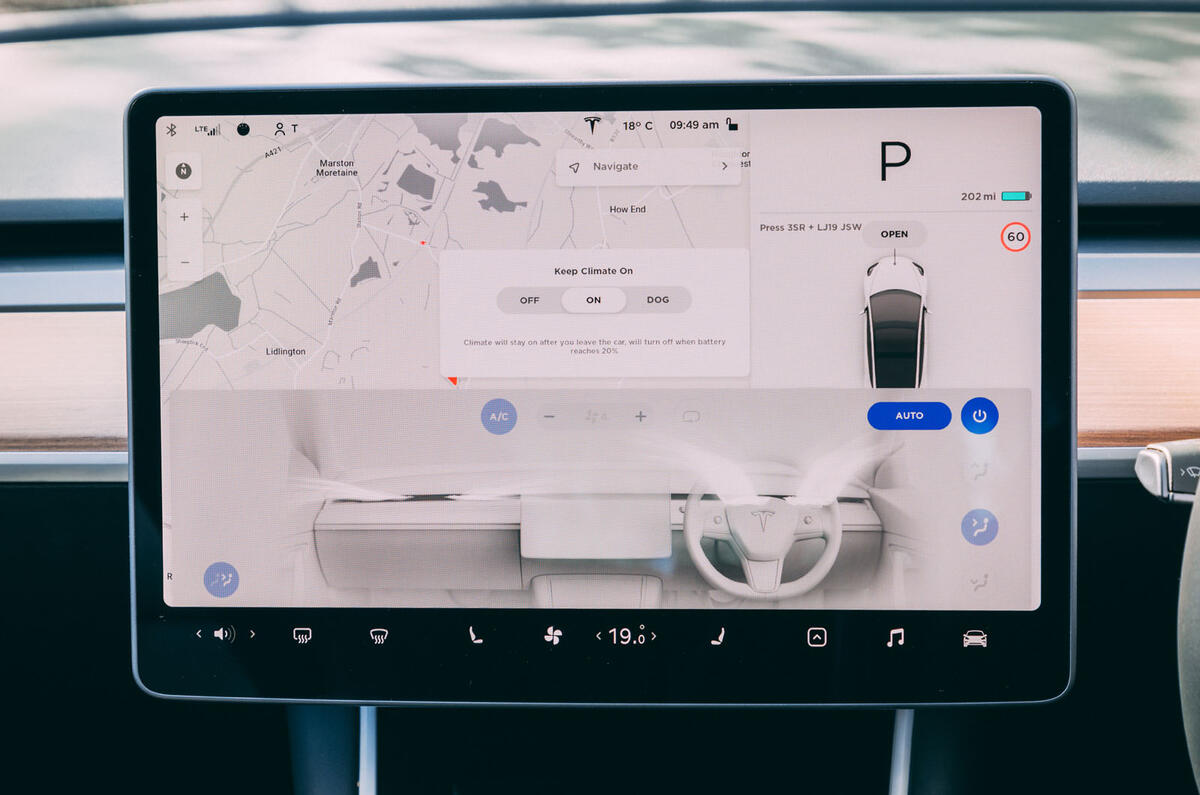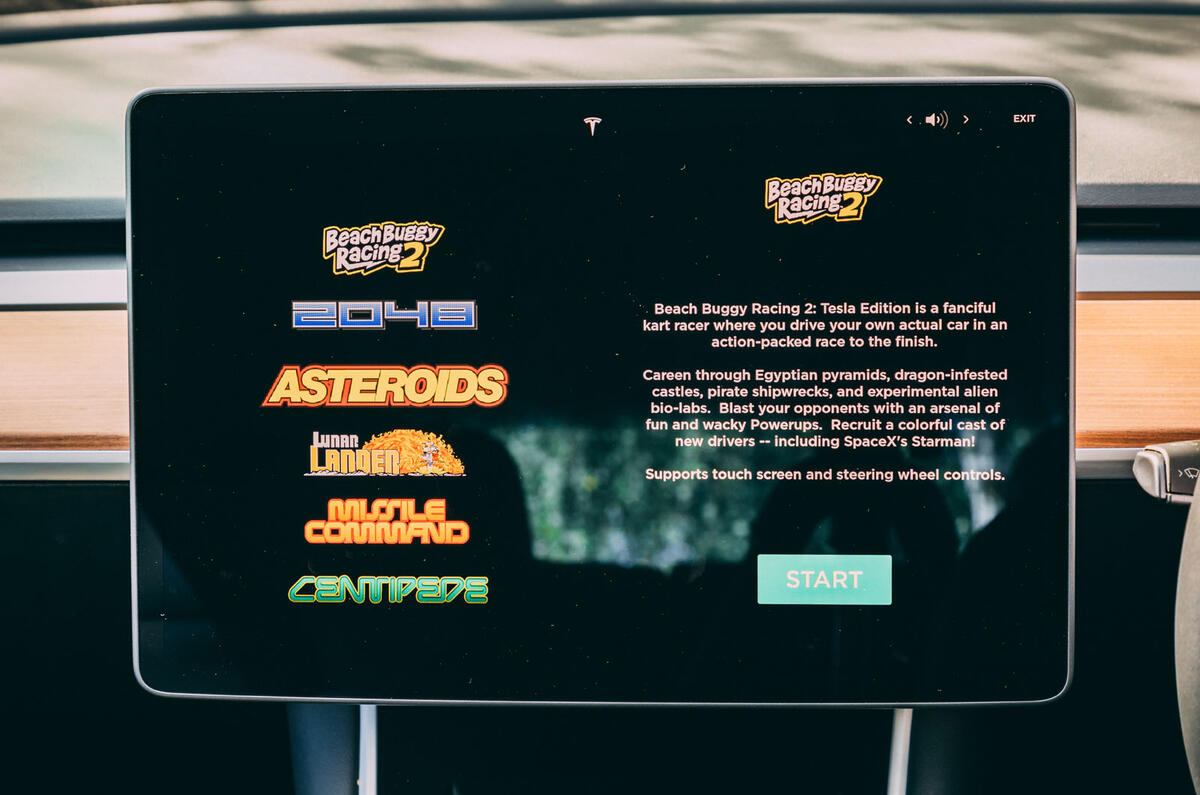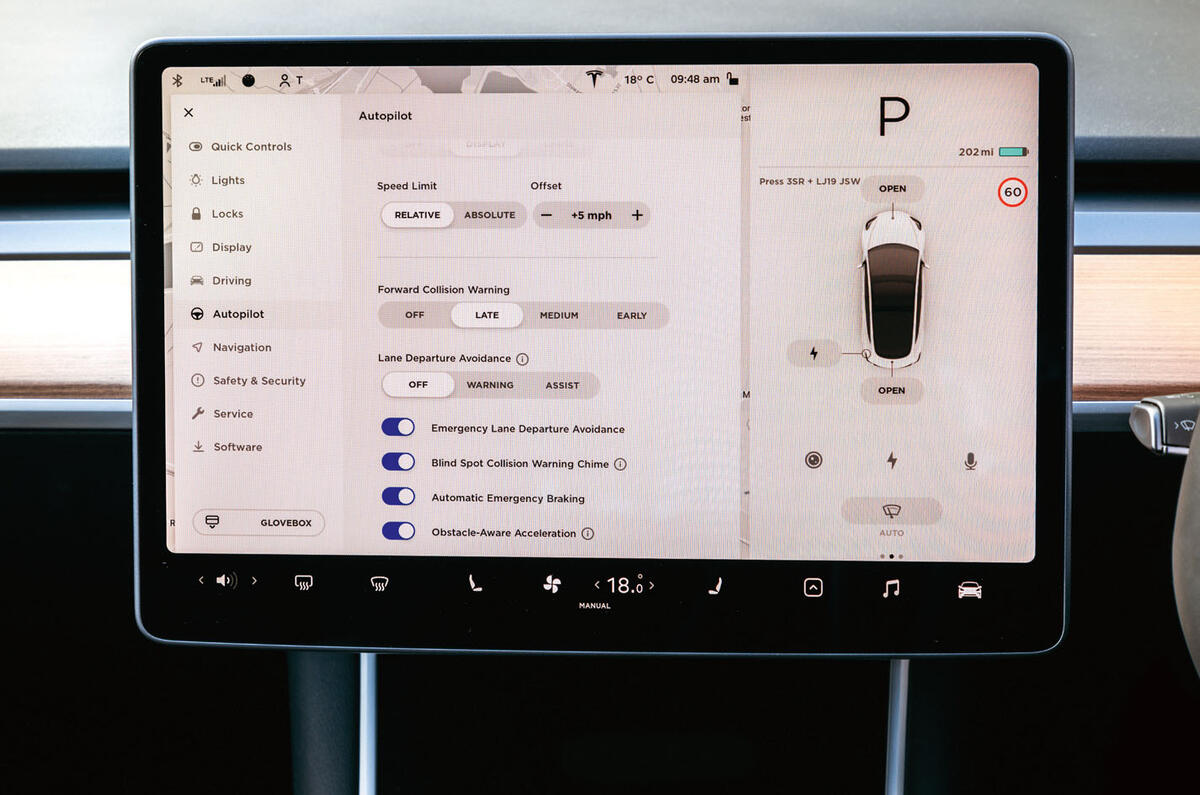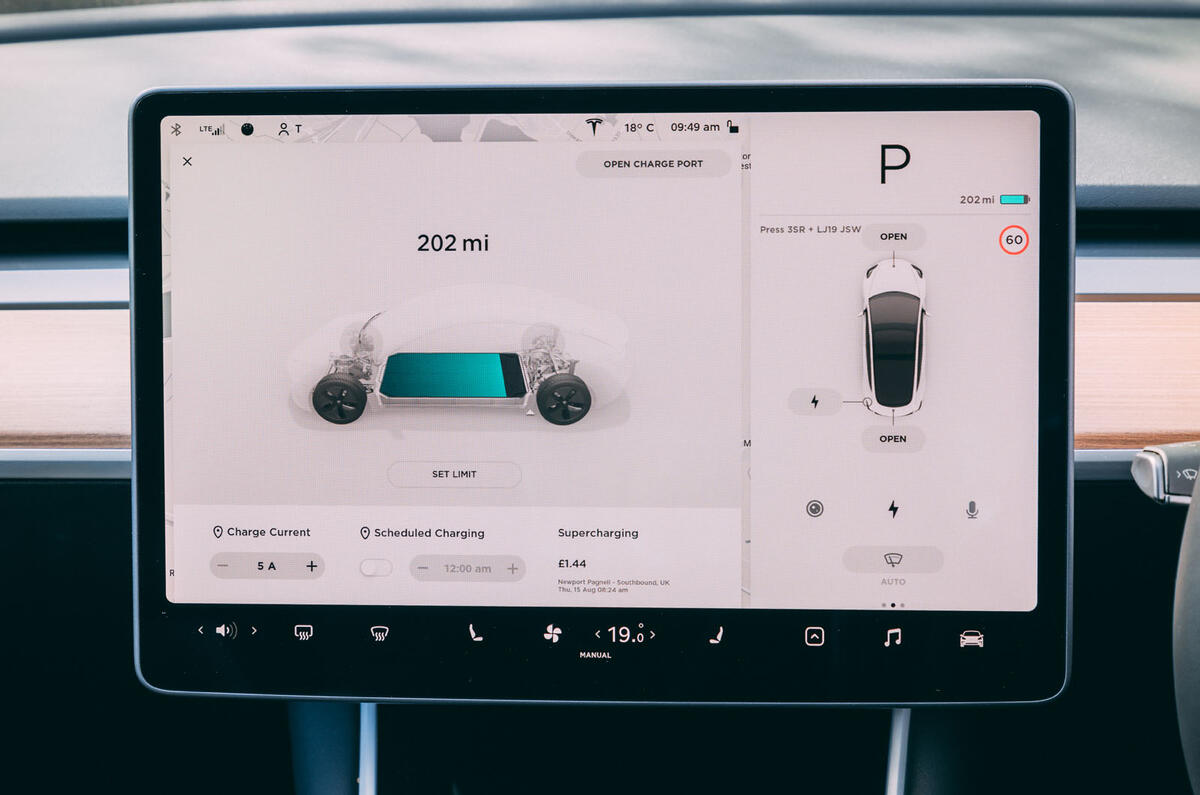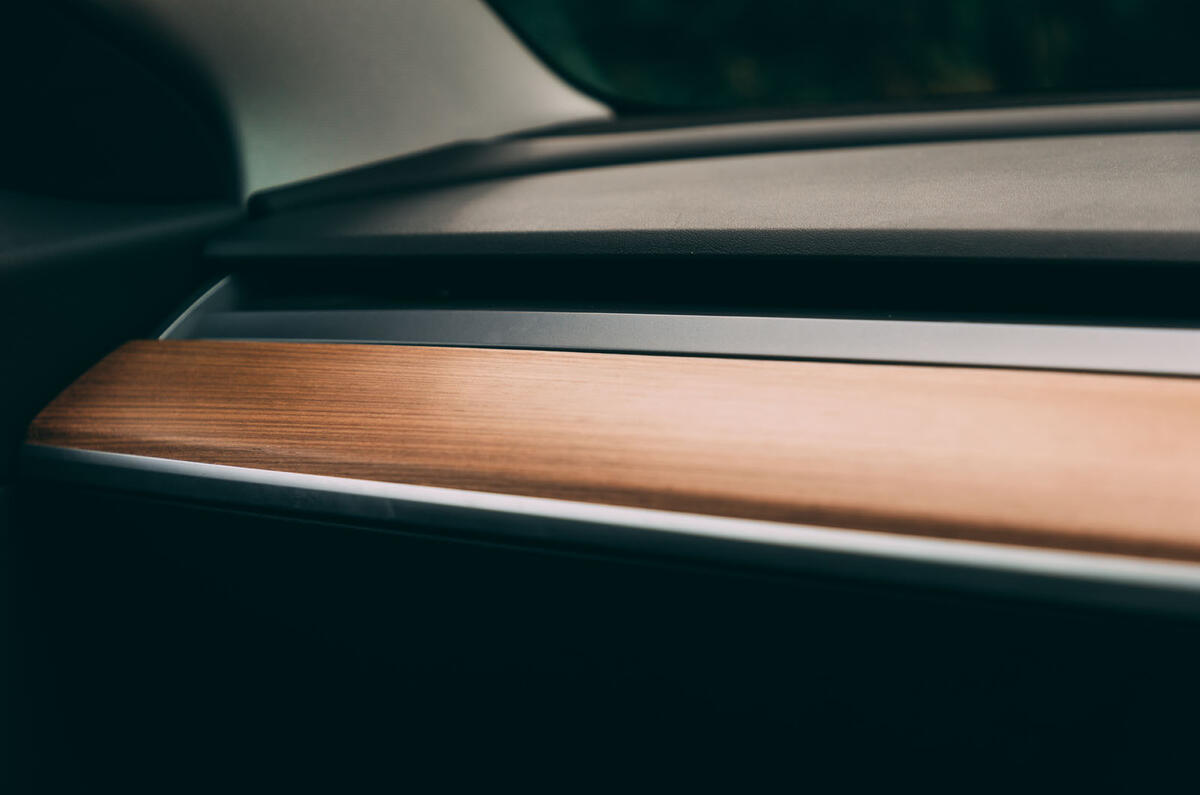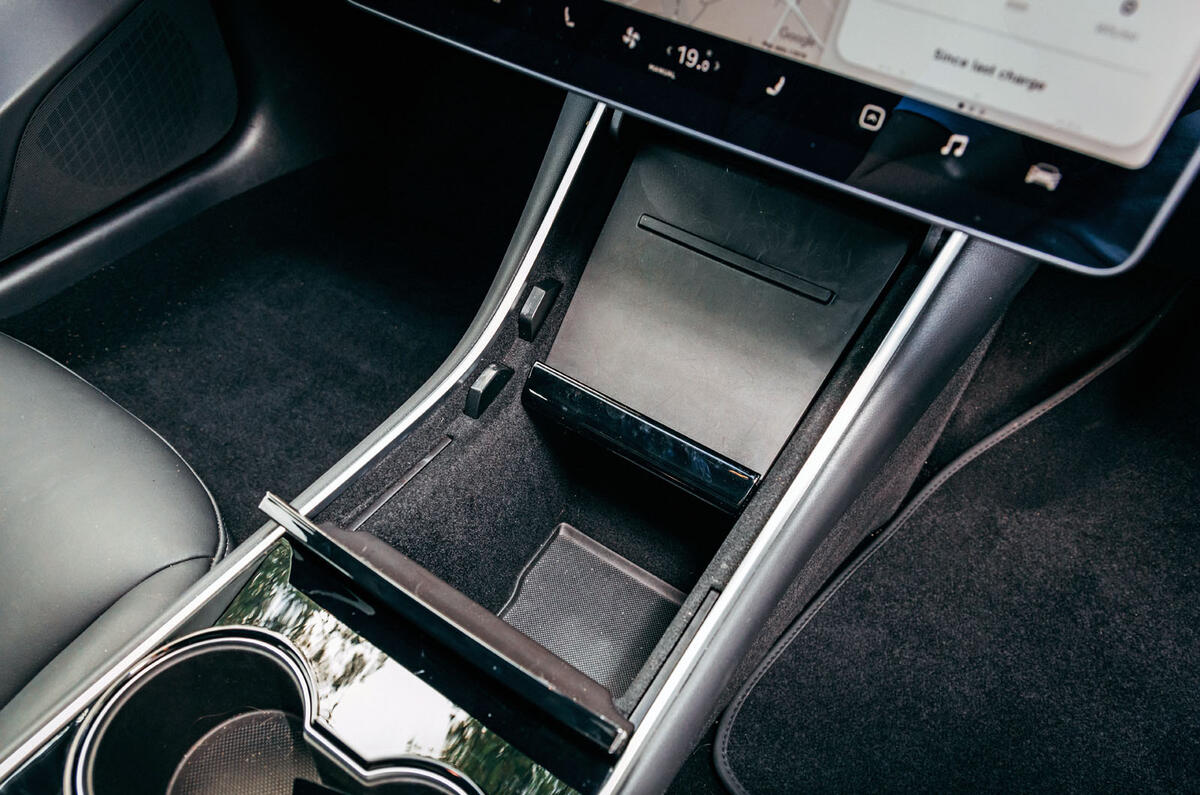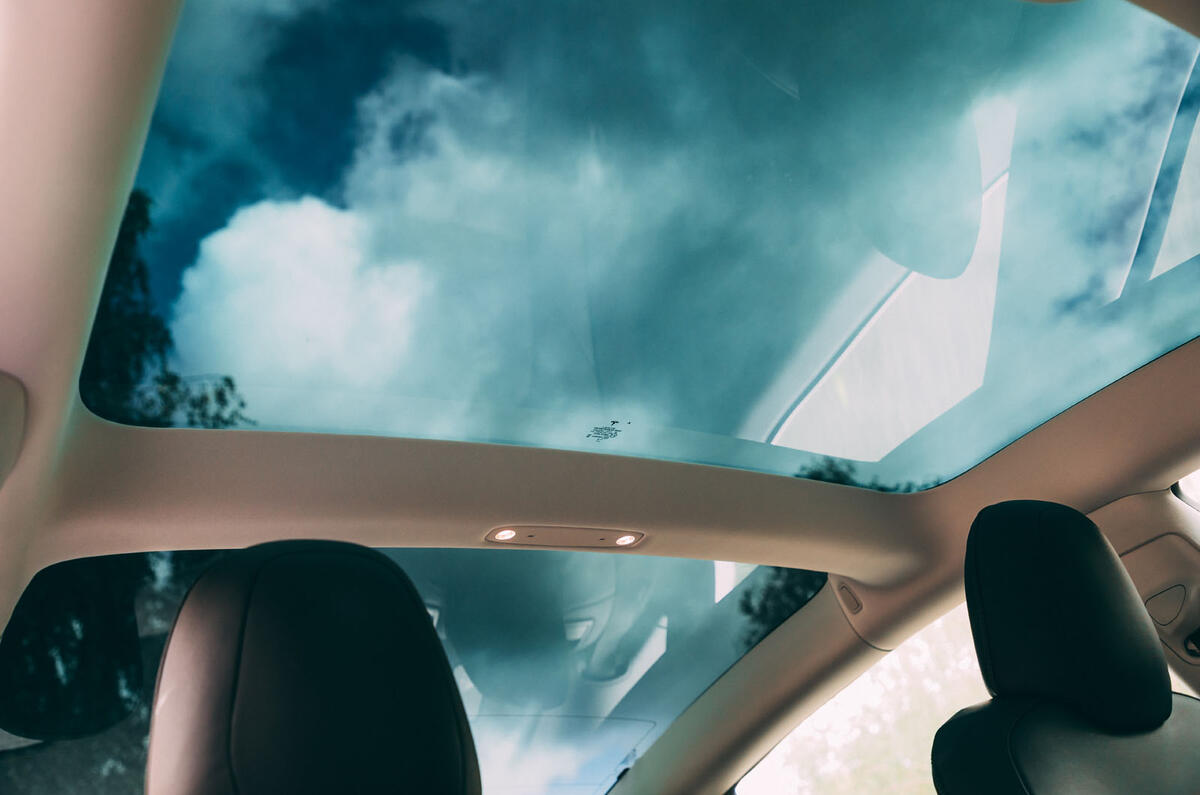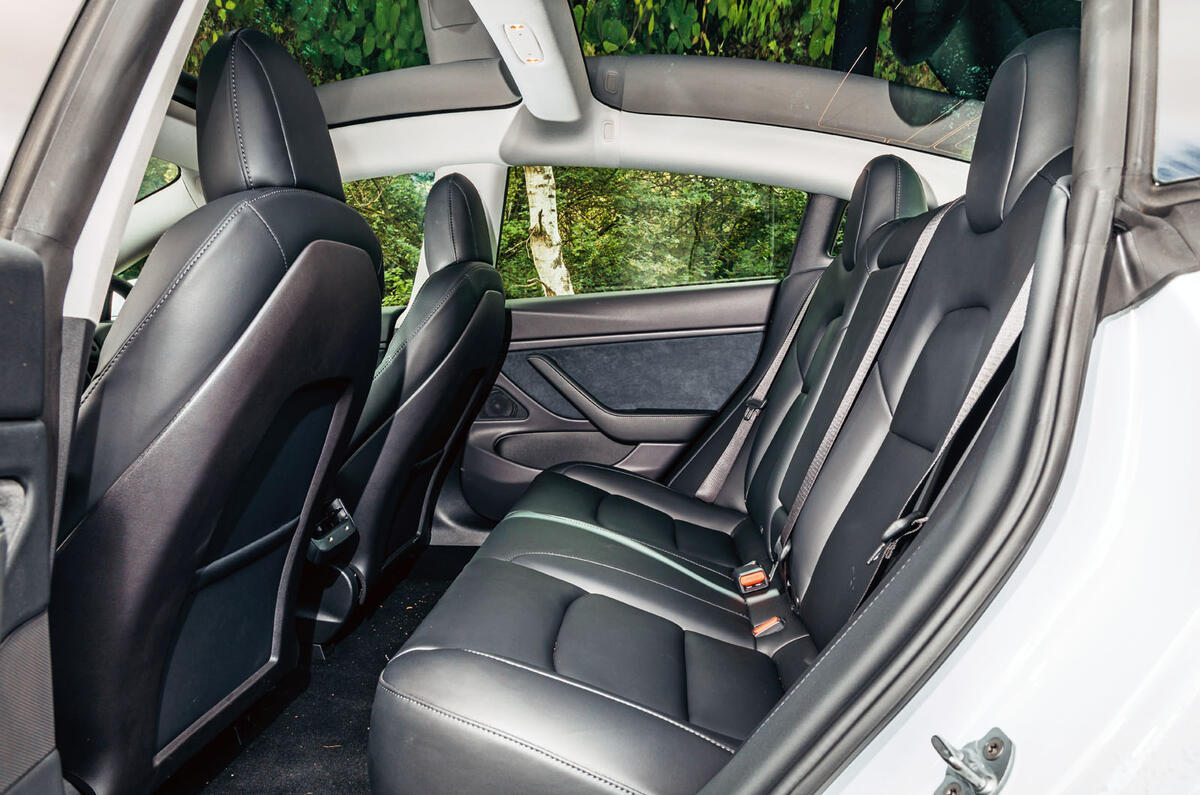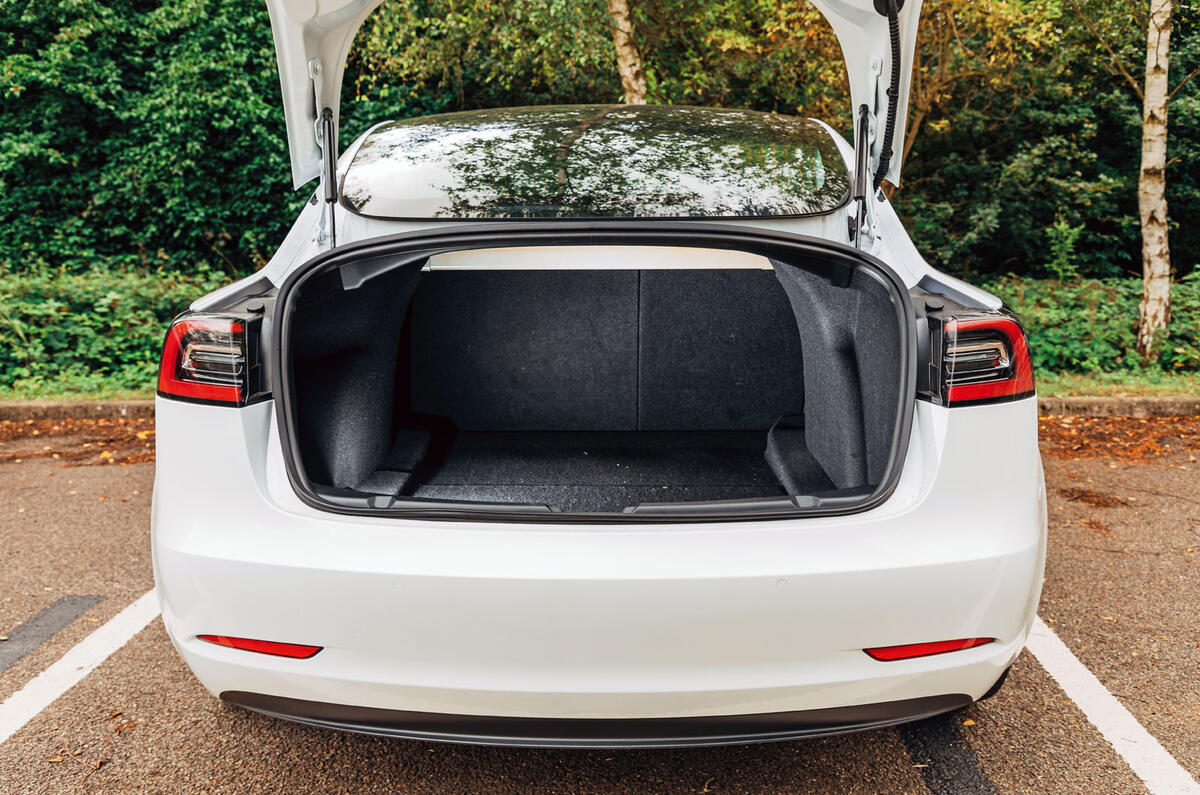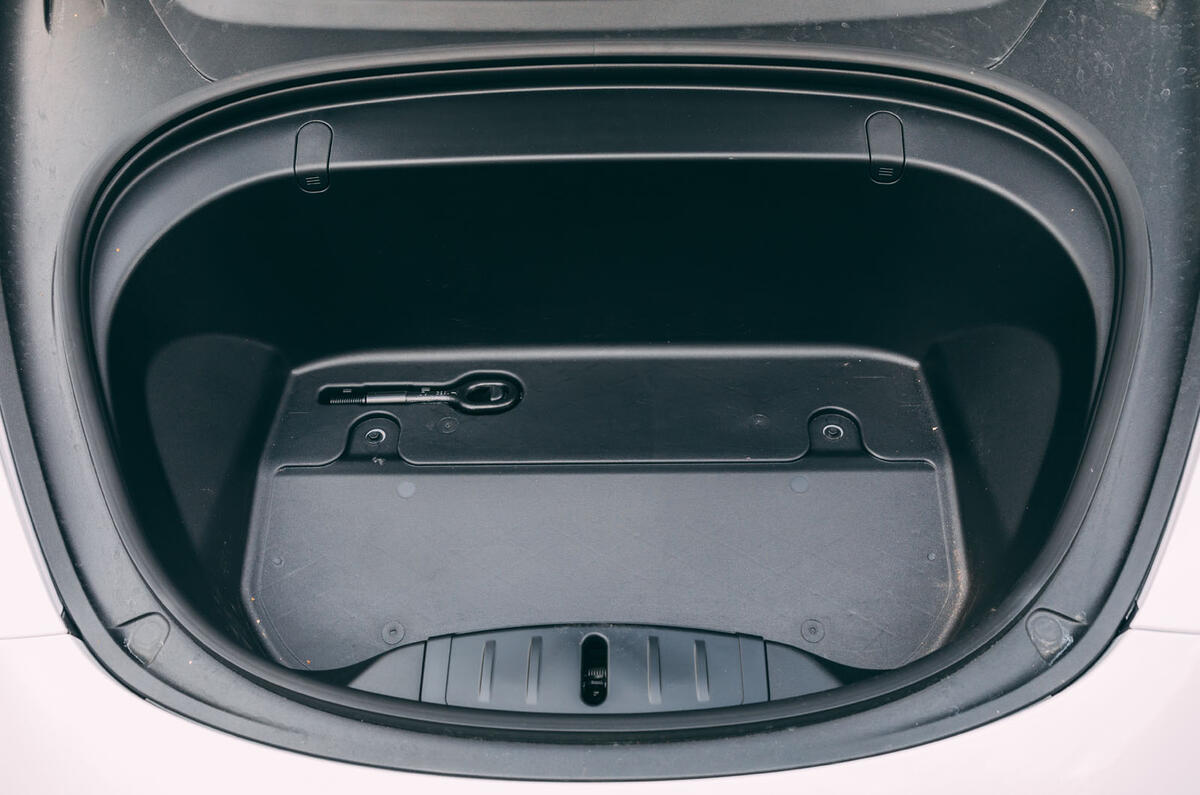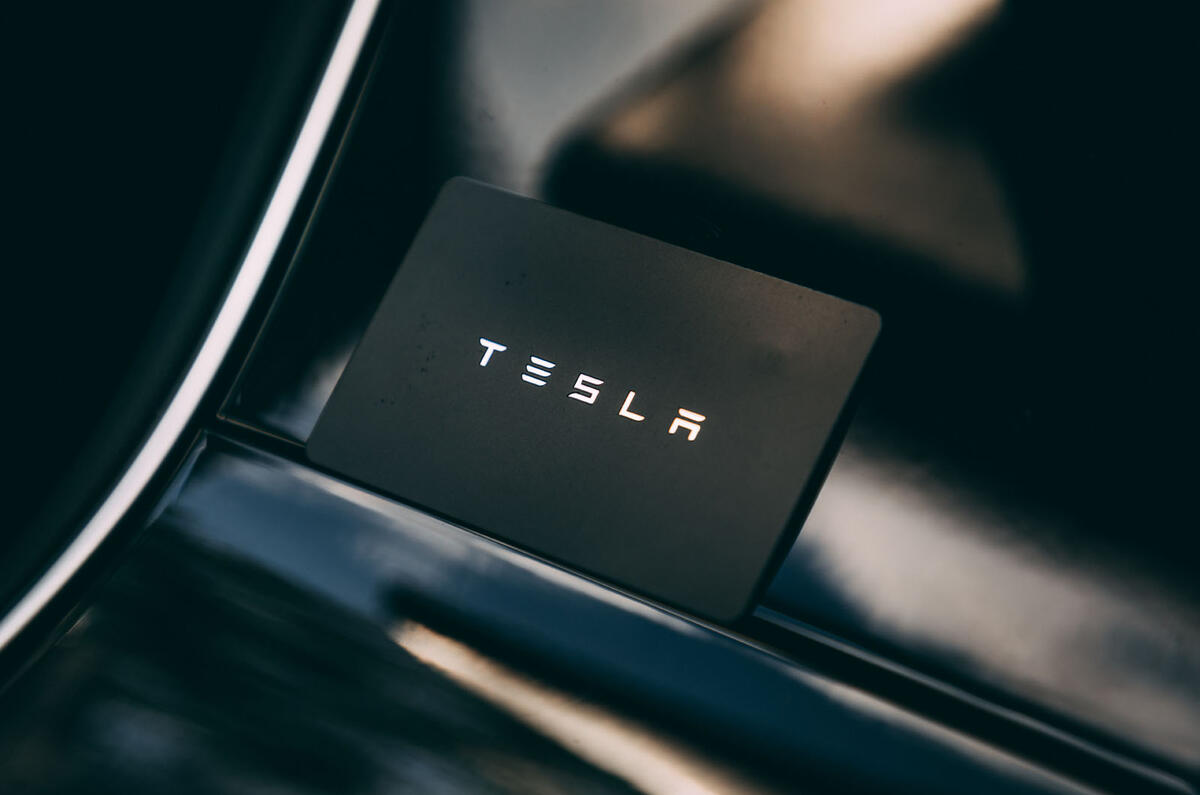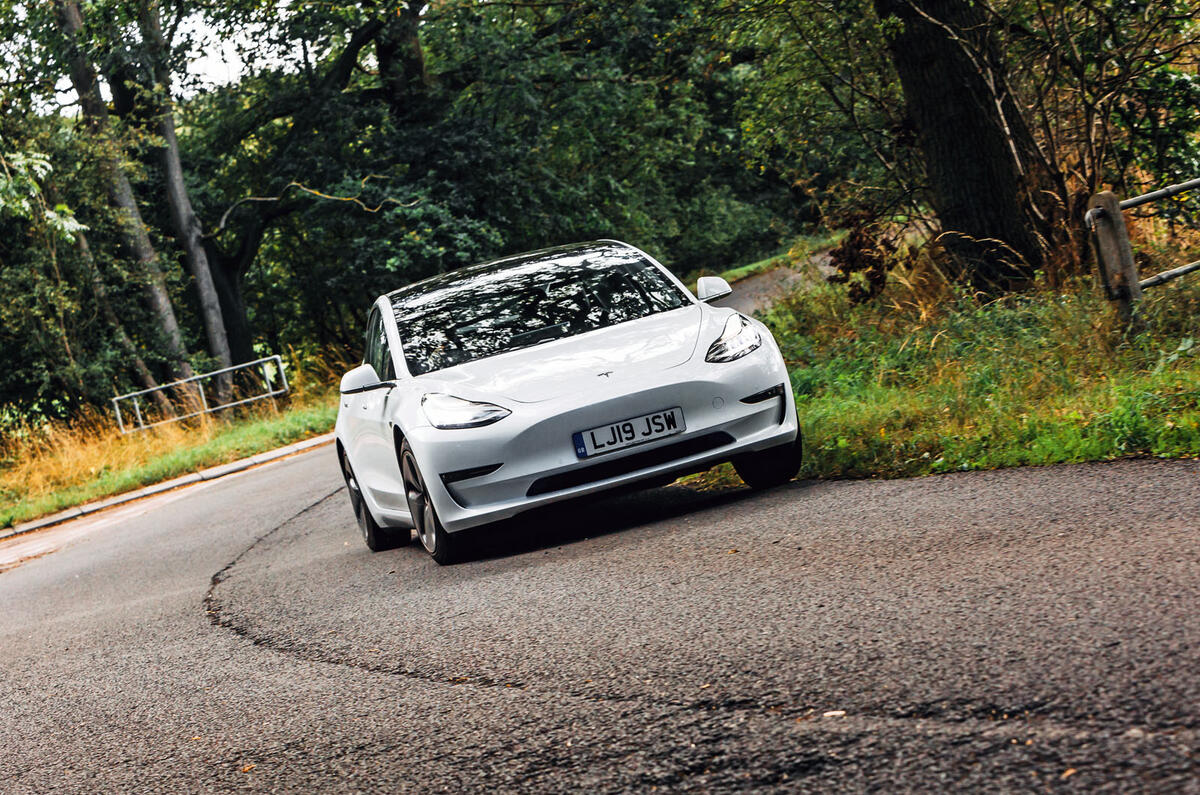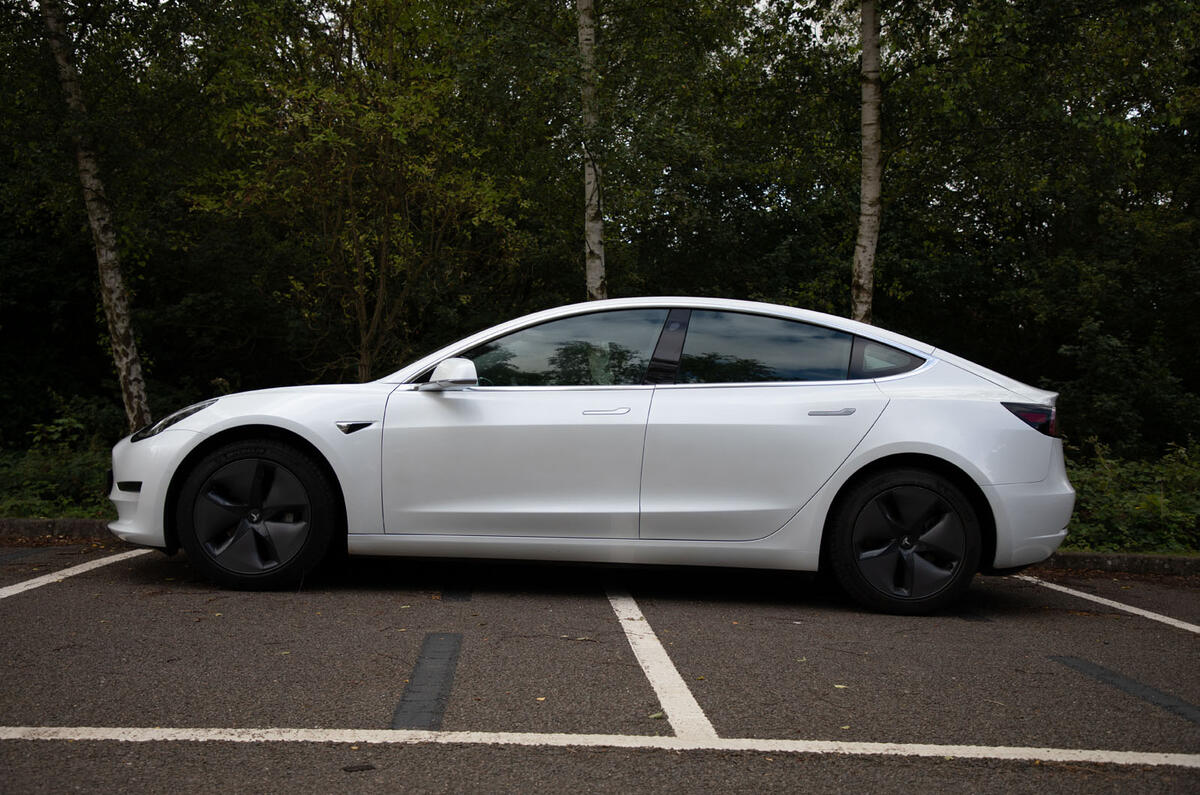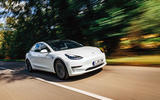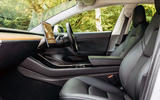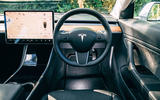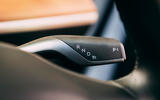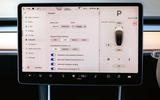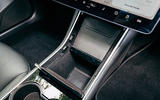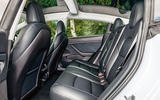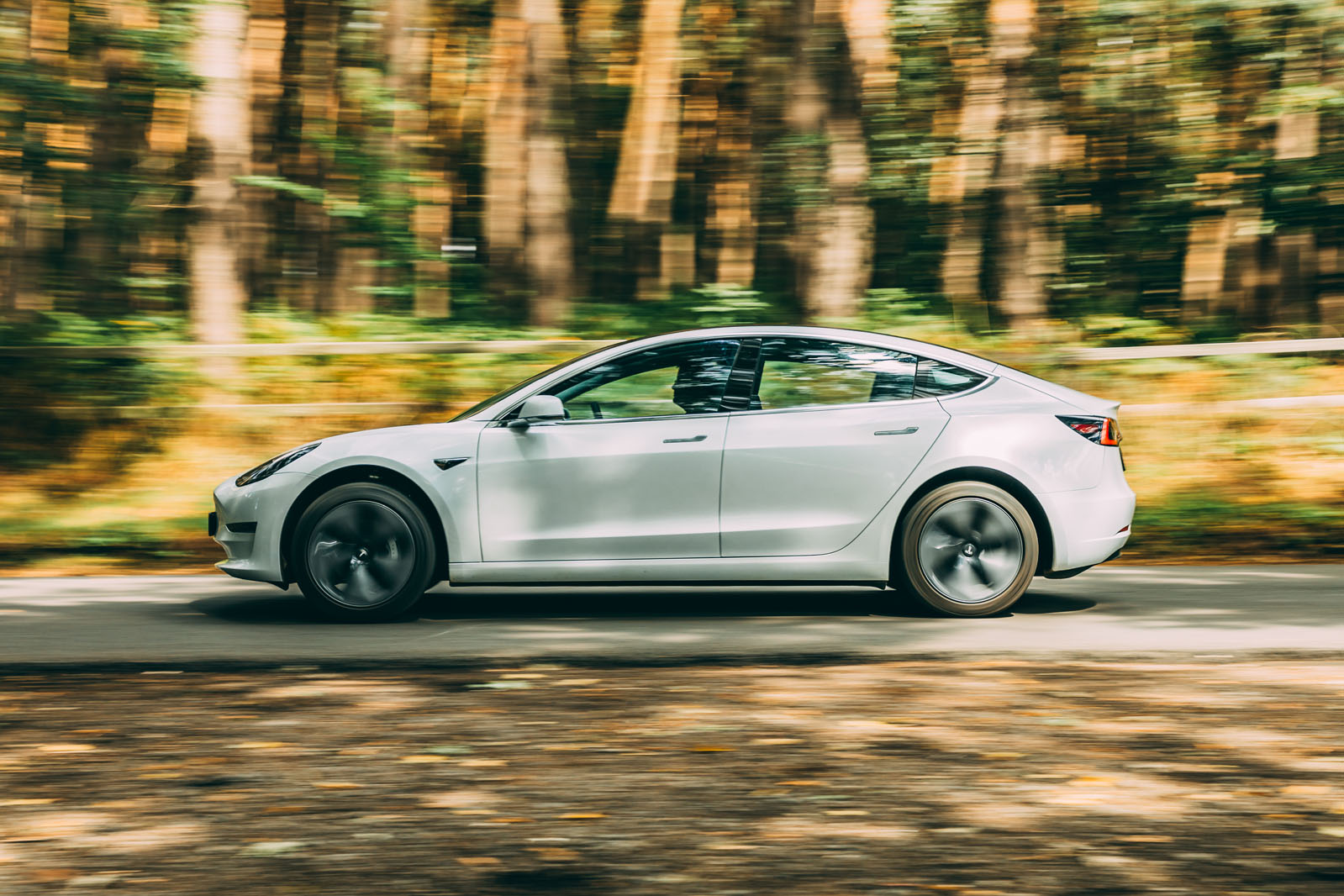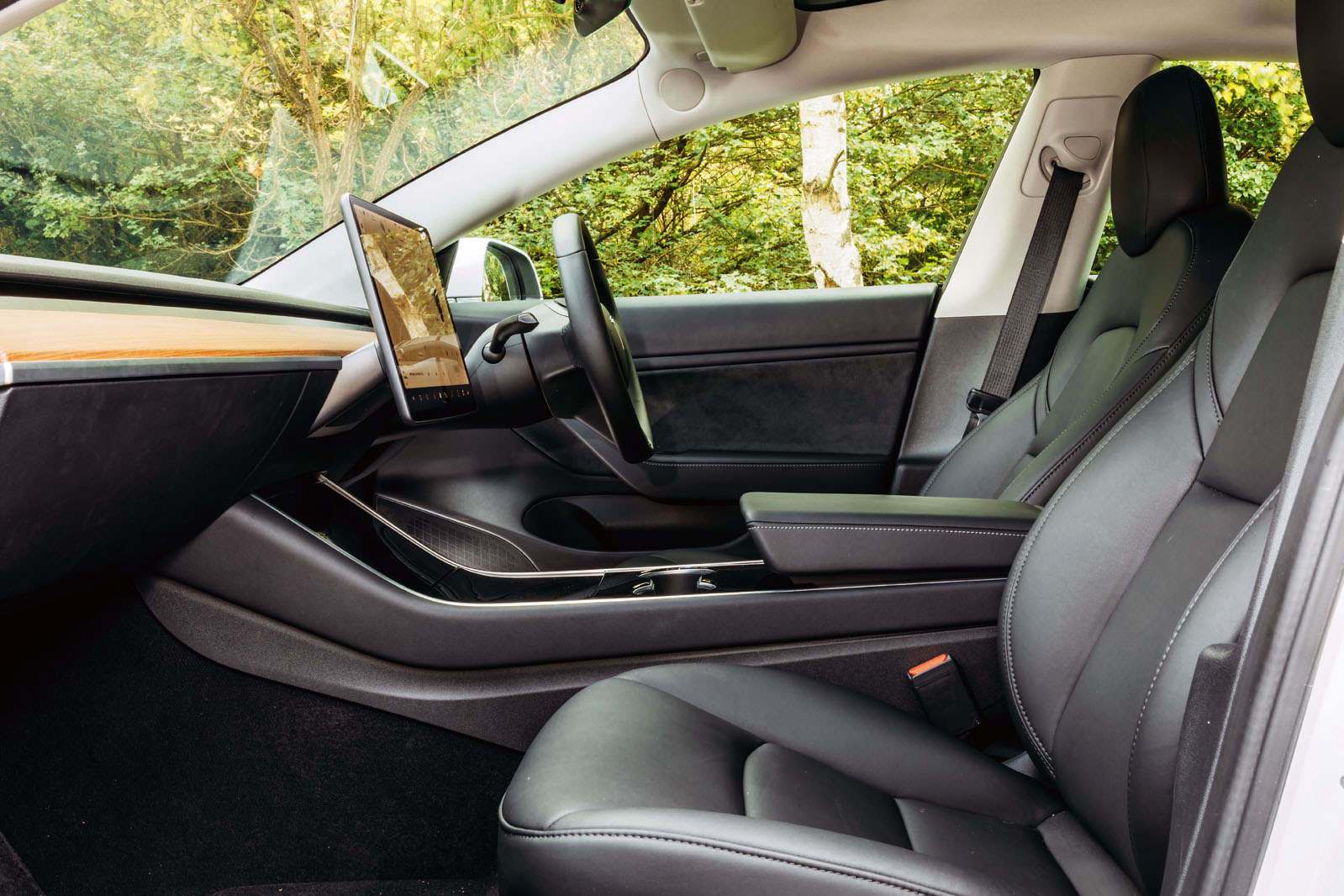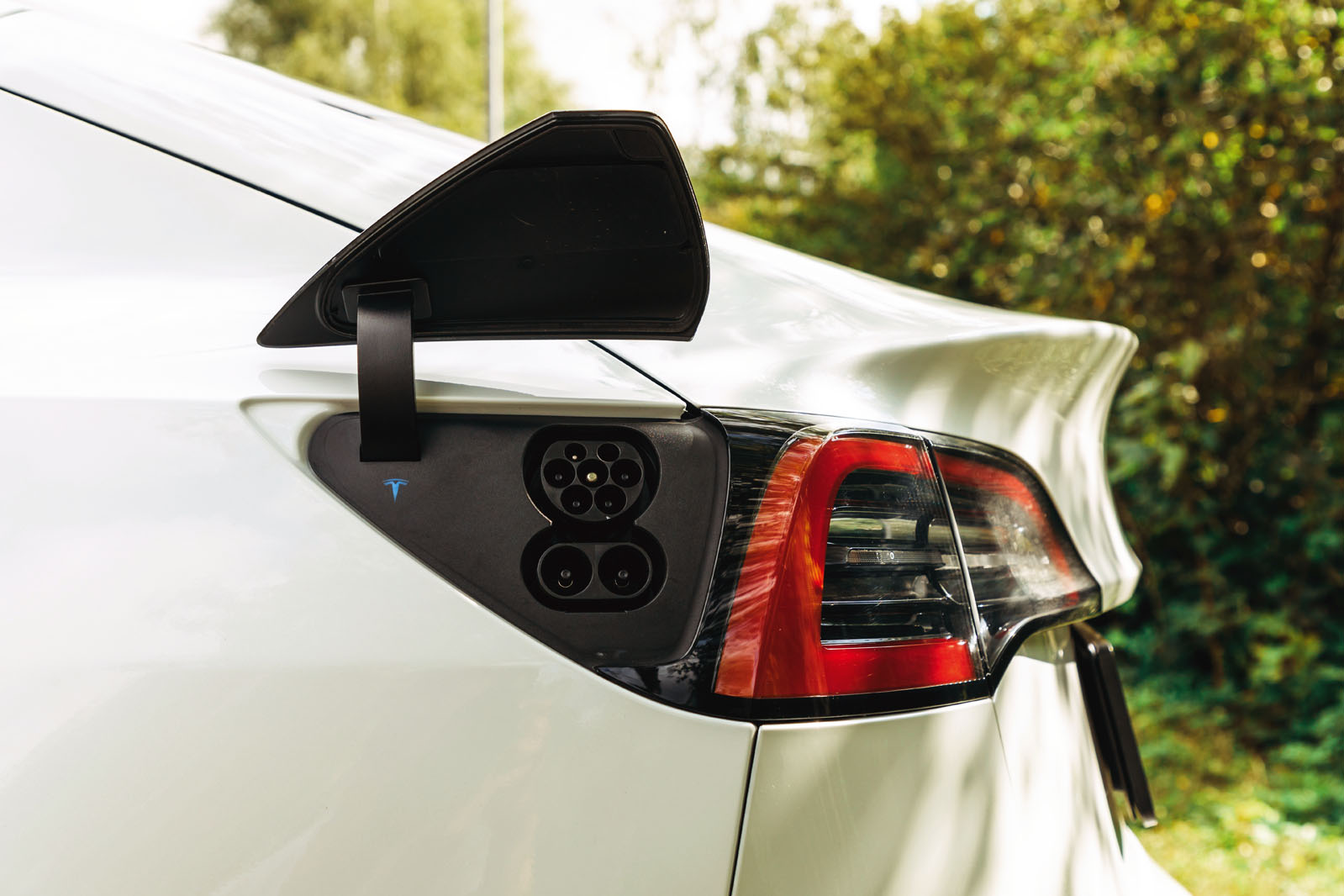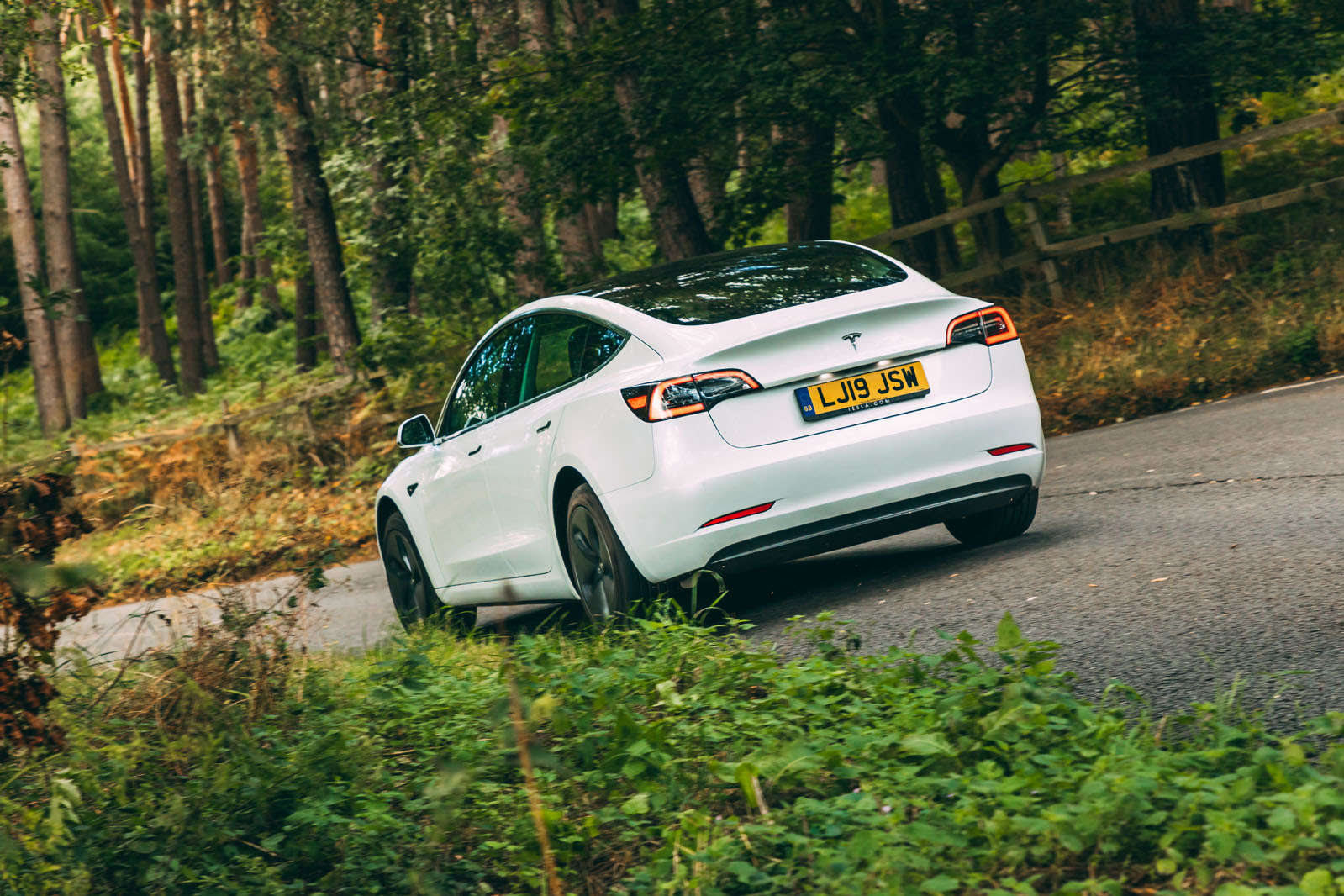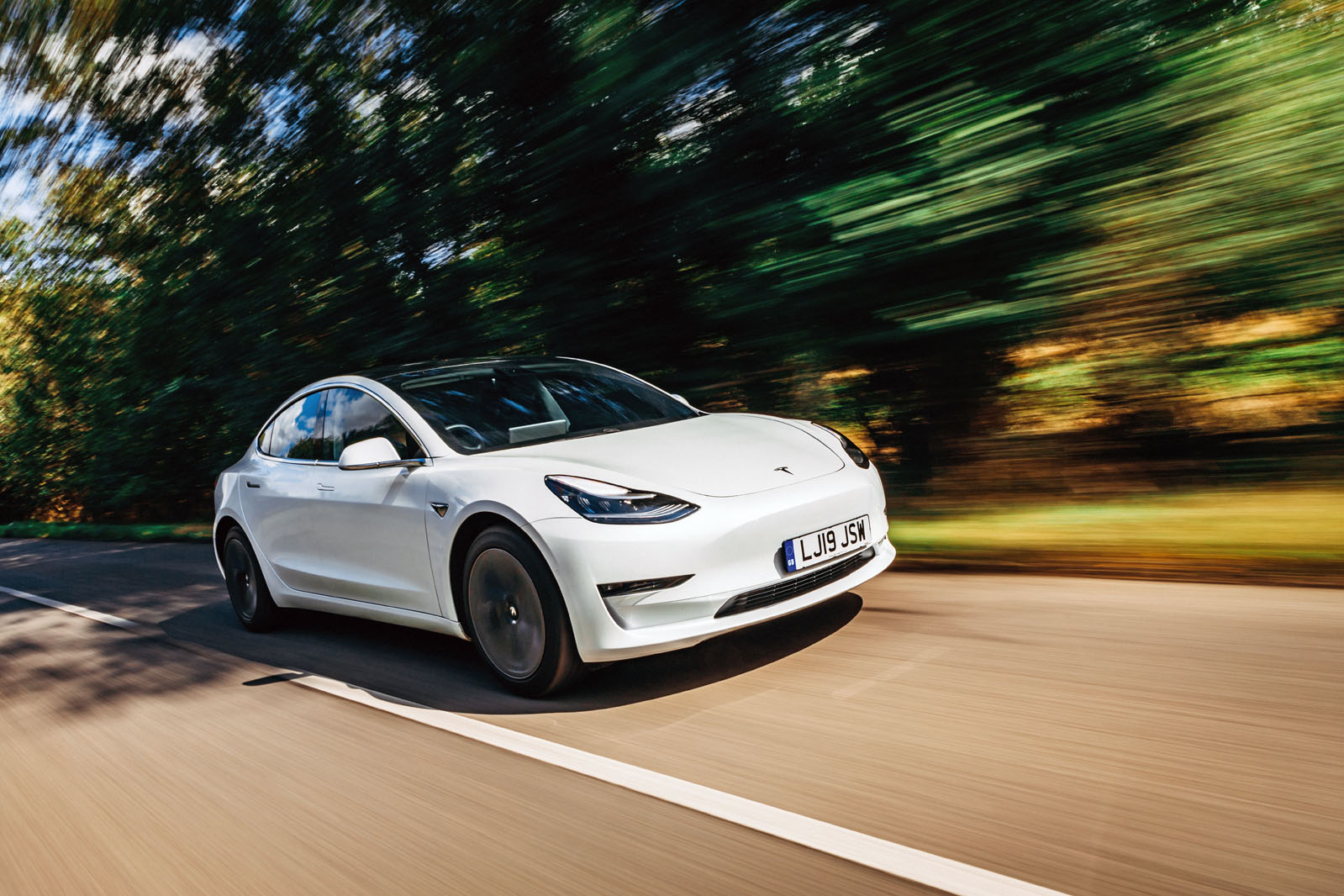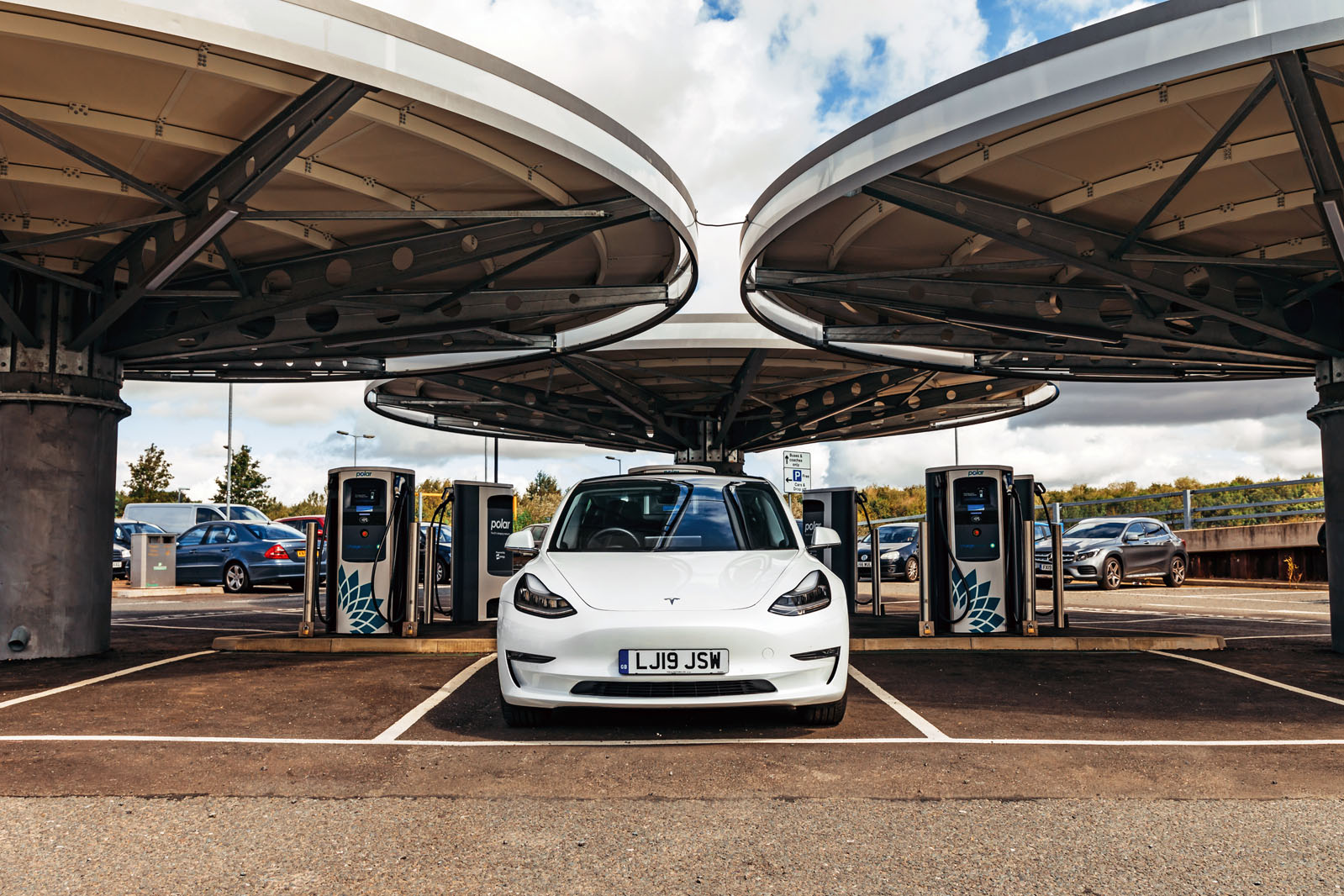ASSISTED DRIVING NOTES
The Model 3’s Autopilot and Autosteer functions extend beyond motorway lane keeping and traffic jam assist functionality to drive the car around town and to negotiate junctions autonomously – in theory. However, they’re troubling systems to use.
Autopilot will centre the car within its lane, maintain a chosen speed, regulate distance to the car in front and perform lane changes automatically. The system asks you to keep a hand on the wheel at all times, but oddly it requires no input of physical effort from the driver at all and is prone to deactivation if you do attempt to steer the car slightly.
It can also overreact to the presence of other cars around you in traffic that it has only just detected, making the car sweep to the far side of its lane or, worse, abandon an automatic lane change halfway through. Handover of control from car back to driver is telegraphed quite poorly as well.
EMERGENCY BRAKING
Is the system more than averagely prone to ‘false positive’ activation? ✗ Can its sensitivity be adjusted? ✓ Can it be deactivated entirely? ✓
LANE KEEPING
Does the system keep the driver engaged when activated? ✗ Can you easily avoid a pothole without deactivating it? ✗ Does it progressively warn, then intervene, to prevent you changing lanes into the path of an overtaking vehicle? ✗ Does it work equally well on singletrack roads as motorways? ✗ Once deactivated, does it stay off even after restart? ✓
INTELLIGENT CRUISE CONTROL
Can the system recognise and automatically adopt speed limits on posts and gantries? ✗ How consistently does it work? na Does it prevent you undertaking? ✗
COMFORT AND ISOLATION
Eerily strong performance is a dynamic trait we now all expect of an EV, but noisy rolling refinement certainly isn’t. And as much as Model 3 owners will likely still be struck by the car’s accelerative power and responsiveness, if they’re anything like us, they’ll also be disappointed by how much road roar the stiffly set suspension conducts into the cabin, and how much high-frequency audible buzz the car’s body structure can generate on a rough surface.
State-of-the-art noise, vibration and harshness (NVH) insulation techniques evidently weren’t budgeted for when Tesla designed and engineered this car. Given that it doesn’t have a clamouring piston engine, and it’s also the firm’s cheapest model, you might understand why; and yet you still might not be minded to overlook the decision entirely when you realise just how much background roar is allowed into the car at cruising speeds.
The Model 3 is short of Tesla’s own NVH standards, as set by the Model X and Model S, and well short of the refinement level that many will hope for in a car at this price – even some, we dare say, who are buying into the car’s performance appeal and might therefore be willing to accept a bit of compromise.
The car’s ride comfort is also below par, albeit less conspicuously so, for suppleness and bump absorption over less than smooth roads. Here, the firm suspension springing makes the body busy and fidgety. However, ultimate body control is retained and handling security isn’t compromised.
The heavy, inert, high-geared steering we referenced earlier does at least make for reasonable high-speed motorway stability and it is seldom affected by bump steer.


